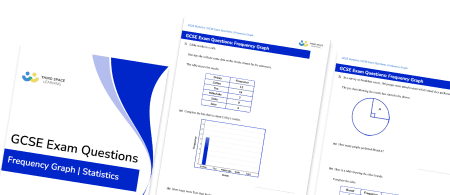FREE DOWNLOAD
Time Series Graphs Worksheet

Help your students prepare for their Maths GCSE with this free time series graphs worksheet of 18 questions and answers
- Section 1 of the time series graphs worksheet contains 11 skills-based time series graphs questions, in 3 groups to support differentiation
- Section 2 contains 4 applied time series graphs questions with a mix of worded problems and deeper problem solving questions
- Section 3 contains 3 foundation and higher level GCSE exam style time series graphs questions
- Answers and a mark scheme for all time series graphs questions are provided
- Questions follow variation theory with plenty of opportunities for students to work independently at their own level
- All questions created by fully qualified expert secondary maths teachers
Suitable for GCSE maths revision for AQA, OCR and Edexcel exam boards
Unlock access to download your free resource
You can unsubscribe at any time (each email we send will contain an easy way to unsubscribe). To find out more about how we use your data, see our privacy policy.
Time series graphs at a glance
A time series graph (or time graph) is a line graph showing the changes in one variable over time. The time period (e.g. days, weeks, years) is marked on the x axis, and the variable values are marked on the y axis. Coordinate pairs are plotted and then joined with straight line segments.
Time series data is easier to interpret if we draw a time series graph as they can help to visualise fluctuations in temperature, interest rate percentages for a bank, or the number of sales for a company. We can look at seasonality of data, and recognise trends. Two graphs can be plotted on the same set of axes, making it easier to compare data sets.
While moving averages are no longer required at GCSE they can provide students with practice on calculating averages and enrich their ability to interpret graphs.
Looking forward, students can then progress to additional Statistics worksheets, for example the mean, median, mode and range worksheet, the frequency graphs worksheet, or the line graphs worksheet.
For more teaching and learning support on Statistics our GCSE maths lessons provide step by step support for all GCSE maths concepts.
Do you have GCSE students who need additional support?

There will be students in your class who require individual attention to help them achieve their target GCSE maths grade. In a class of 30, it’s not always easy to provide.
Help your students feel confident with exam-style questions and the strategies they’ll need to answer them correctly with personalised online one to one tutoring from Third Space Learning
Lessons are selected to provide support where each student needs it most, and specially-trained GCSE maths tutors adapt the pitch and pace of each lesson. This ensures a personalised revision programme that raises grades and boosts confidence.








